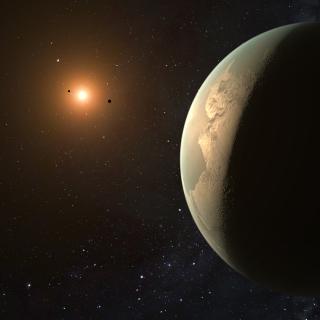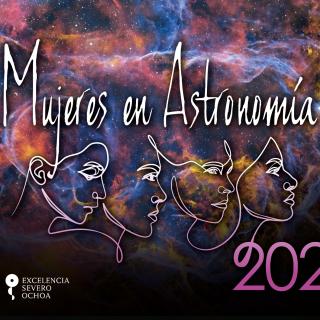Now more than half way through its programme, the European Week of Astronomy and Space Science EWASS 2015 which is being held on the Guajara Campus of the University of La Laguna (Tenerife), is carrying on with its 40 parallel sessions in which the latest advances in astronomy are being presented. The evidence for one galaxy swallowing another, and the search for extraterrestrial life and among the themes which have been of interest in the past few hours, as well as the awarding of the prizes for young researchers, and one day´s sessions devoted to outreach activities.
Messier 87 swallows another galaxy
The giant elliptical Galaxy Messier 87 has absorbed another intermediate sized galaxy during the past thousand million years, which keeps it growing, according to new observations performed with the Very Large Telescope of ESO, the European Southern Observatory. The research leading to this discovery, which was presented during EWASS 2015, and is published today in the journal Astronomy and Astrophysics Letters, was led by the PhD student Alessia Longobardi, at the Max Planck Institute for Extraterrestrial Physics in Garching, (Germany).
Although astronomers know that galaxies grow by absorbing other smaller galaxies, it is not easy to find direct evidence for this, because the stars in the galaxy which is being absorbed mix with the stars in the bigger galaxy without leaving a direct trace. Messier 87 is situated at the centre of the Virgo cluster of galaxies. It is an enormous accumulation of stars, with a total mass more than a million million times the mass of the Sun, situated at some 50 million light years from us.
The new discovery is based on the detection of a group of objects in one zone of M87 whose velocities are very different from those of the other objects of the same type within the galaxy, whose origin must be the galaxy which has been swallowed.
MERAC 2015 prizes to Young researchers
Yesterday the MERAC prizes 2015, awarded by the European Astronomical Society to recognize the careers of young researchers was awarded in three different categories. The prize for theoretical astrophysics was awarded to Michela Mapelli (see the interview) of the Padua Astronomical Observatory (Italy) who is a specialist in studies of the centre of the Milky ´Way. The prize for observational astrophysics was for Saskia Hekker, of the Max Planck Solar System Research Institute, Göttingen (Germany) whose research line is asteroseismology of red giant stars. The prize for new technological development was given to Sylvestre Lacour of the Paris Observatory (France), considered to be the leader in Europe of techniques of pupil masking, which are basic for the study of the environments of stars.
There is life out there
Most researchers are convinced that there is life somewhere on another planet. The only question is when and how it will be detected. Enric Pallé, a researcher at the Institute of Astrophysics of the Canaries (IAC) and coordinator of the symposium on the search for life on exoplanets within the European Week of Astronomy and Space Science, EWASS 2015, explains that the new extremely large telescopes (ELT’s) and the James Webb Space Telescope, will make big improvements in our possibility to carry out research into the atmospheres of rocky planets which may be within the “habitability zones” around stars, and which would be most similar to Earth. Hopes are placed above all on the next generation of instruments with which it is hope that life can be detected in some 15 to20 years from now.
Astronomy for the general public
One of the symposia of EWASS 2015 is dedicated to outreach activities in astronomy, of which one of the more outstanding is the programme of the Roque de los Muchachos Observatory (La Palma) which has brought astronomy to all the students between 16 adn 18 years old on the island, and whose director is David García-Álvarez. Natalia Ruiz-Zelmanovitch, of the Molecular Astrophysics Group at the Institute of Materials Science of Madrid explained the workings of a communications unit attached to a scientific project based on her experience with ASTROMOL. Amelia Ortiz-Gil of the Astronomical Observatory of the University of Valencia, and Tania Johnston, of the Royal Observatory Edinburgh (UK) presented projects to bring astronomy to specific sections of the public, one for people with problems of sight, and the other for the deaf.
This new edition of EWASS, the European Week of Astronomy and Space Science, coordinated locally by the Institute of Astrophysics of the Canaries (IAC) is being celebrated on the Guajara Campus of the University of La Laguna from 22nd to 26th of June. The conference is organized by the European Astronomical Society, in collaboration with the Spanish Astronomical Society, the Institute of Astrophysics of the Canaries, and the University of La Laguna.



